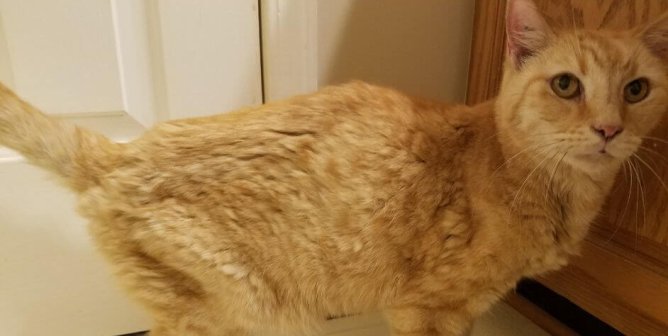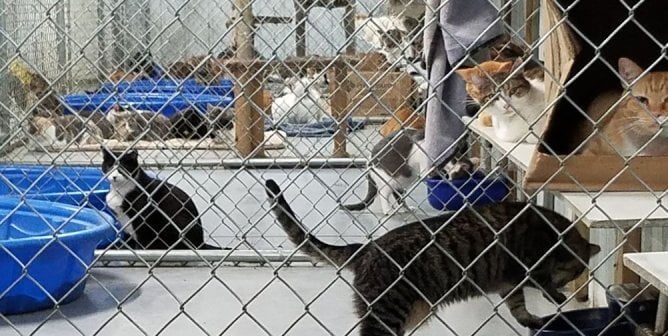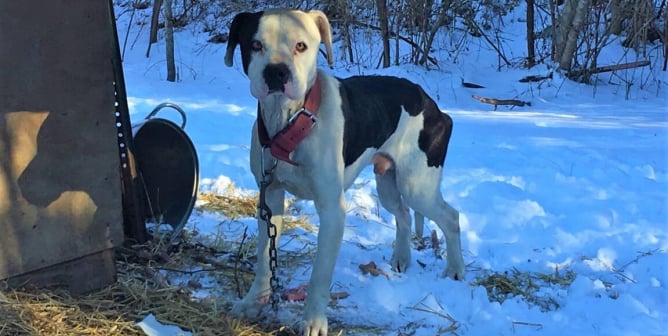Pet Shops: No Bargain for Animals
Pet shops use the natural appeal of puppies, kittens, and other animals to sell these animals at an inflated price—often several hundred dollars or more for “purebred” animals. Common problems in the pet-shop industry include selling sick and injured animals, failing to provide proper veterinary care, keeping animals in unsanitary conditions, and using inhumane methods to dispose of sick or unwanted animals. You can help bring about changes in local pet stores if you know what conditions to look for and what steps to take.
Where the Animals Come From
The vast majority of dogs sold in pet shops are raised in “puppy mills,” breeding kennels located mostly in the Midwest that are notorious for their cramped, crude, and filthy conditions and for their continuous breeding of unhealthy and hard-to-socialize animals (see PETA’s factsheet on puppy mills for more information).
Birds, rabbits, mice, and other rodents are often mistakenly thought of as “starter pets” and sell very well, so pet shops keep plenty in stock. These animals, too, come from mill-like breeding facilities or from “backyard” operations that aren’t even minimally regulated. A PETA eyewitness documented that thousands of animals were confined to plastic bins stacked in shelving units like filing cabinet drawers at Holmes Farm, a massive animal mill in Pennsylvania that supplies hamsters, rabbits, gerbils, chinchillas, ferrets, and other small animals to PetSmart, Petco, Pet Supplies Plus, and many other stores across the eastern United States. For more on this case, the evidence of which led to a USDA investigation, please visit PETA.org.
A PETA undercover investigation into Moulton Chinchilla Ranch (MCR)—a massive breeding mill near Chatfield, Minnesota, that kept approximately 1,000 chinchillas confined to wire-floored cages in a shed reeking of ammonia—found animals who were denied the basic necessities of life, including effective veterinary care for chronic infections and severe, life-threatening injuries that caused them to suffer and even die. Law-enforcement officials executed a search warrant at MCR and opened a criminal investigation. Please visit PETA.org for more information about this case.
Sugar gliders, tarantulas, and some birds, reptiles, and other species are often called “exotics.” The journey for many of these animals begins in places such as Australia, Africa, and the jungles of Brazil. According to National Geographic, “Wildlife trafficking may very well be the world’s most profitable form of illegal trade, bar none.”1
The U.S. is the main destination for exotic and endangered wild animals. National, state, and local governments are passing laws that prohibit the capture and sale of certain species, but most of these regulations are poorly enforced and are designed to protect humans from disease rather than to ensure that animals are handled humanely.2 PETA’s eyewitness investigation of Reptiles by Mack, an enormous mill that supplies frogs, lizards, turtles, snakes, crustaceans, and arachnids to PetSmart and other pet stores worldwide, documented animals in severely crowded, filthy tubs fought for food, leading to bloody, mangled limbs, which were left to rot off. Dozens of escaped animals died on makeshift glue traps that weren’t regularly checked. Animals were gassed in tiny plastic bags and tossed into a freezer. For more on this case, please visit PETA.org.
Animals in pet shops are often purchased by people who are unprepared or unable to provide for their needs; many of these animals will be abandoned or will die from neglect or improper care. For more information, please read PETA’s factsheet about the dangers that the exotic-pet business poses to both animals and humans.
What to Look for in Pet Stores
Healthy young animals are usually energetic and have shiny coats. Look for signs of ill health, such as listlessness, diarrhea, emaciation, dull coats, runny eyes, and dry noses. Sick animals should never be housed with healthy ones. Check the general sanitation conditions; notice signs of cockroach infestation, rodent droppings on the floor, and rusty or dirty cages. Also look for water bottles that contain algae or scum, empty water containers, or animals who are having difficulty obtaining water.
Dogs must have water (it can be in a bottle), and there must be some sort of solid flooring. If a tray is used, it must be flat on the floor. There should be no more than one large dog in a single cage. Look for signs of distemper and parvovirus: runny stool and clogged, dry noses.
Cats should have an elevated surface to rest on. Water must be in a clean water dish rather than in a bottle. Look for signs of upper respiratory disease: eyes covered with an inner membrane, runny eyes and nose, and sneezing.
Rabbits should have a water bottle, not a dish, and access to timothy hay. They should not be listless. If an animal is sick, you may notice other animals in the cage walking over him or her. Watch for runny noses and excessive sneezing.
Birds must have a properly sized perch (i.e., birds’ feet should go three-quarters of the way around the perch). Check for other birds who might be attacking one bird—this is especially common in smaller birds (you may see feathers missing from the head, back, etc.). A bird should not be resting on the bottom of the cage, which is a sign of illness or of having been thrown off the perch by others. Cages should not be crowded.
Check fish tanks for crowding. Generally, a 1-inch-long tropical fish requires between 1 and 3 gallons of water, so there shouldn’t be any more than eight or nine 1-inch-long fish in a 10-gallon tank.3 Look for dead fish in aquariums.
What You Can Do
You can help animals who are sold in pet stores in the following ways:
• Encourage pet stores that sell animals not to do so. PETCO agreed not to sell large birds (such as cockatoos and macaws) after recognizing the inherent cruelty in confining these wild animals and subjecting them to inadequate care.
• Report any sick or injured animal to your local animal control agency or police department immediately.
• Contact PETA about working on legislation to require that animals sold in stores be spayed or neutered.
Lastly, don’t patronize pet stores that sell animals. You can purchase supplies for companion animals from pet-supply stores or catalogs that carry full product lines but that don’t treat animals as merchandise. If you’re searching for an animal companion, adopt from a reputable animal shelter or rescue organization.
References
1Bryan Christy, “The Kingpin,” National Geographic, Jan. 2010.
2Kris Axtman, “After Exotic Pets Are Rescued, What Next?” The Christian Science Monitor, 26 Jul. 2006.
3Michelle Hainer, “Goldfish Bowl Do’s and Don’ts,” The Washington Post, 8 Aug. 2004.







